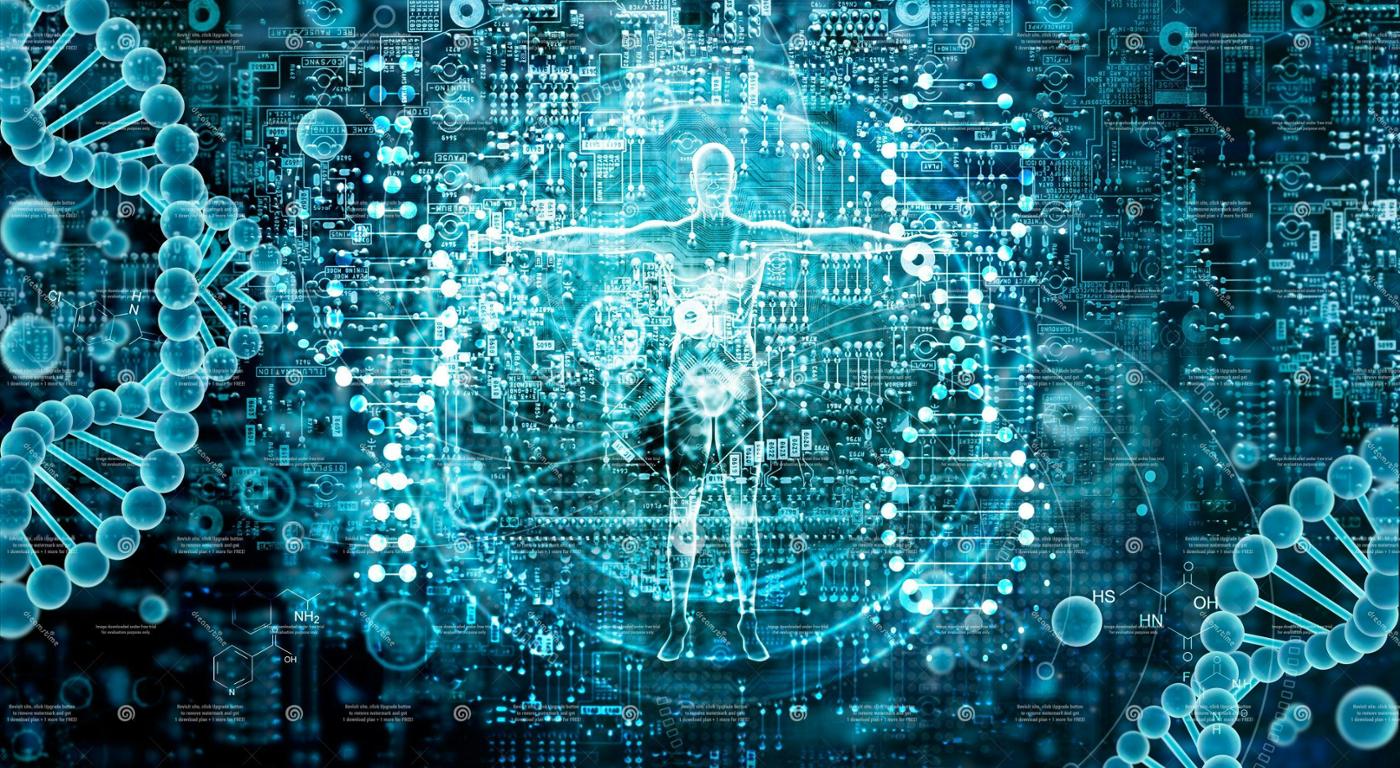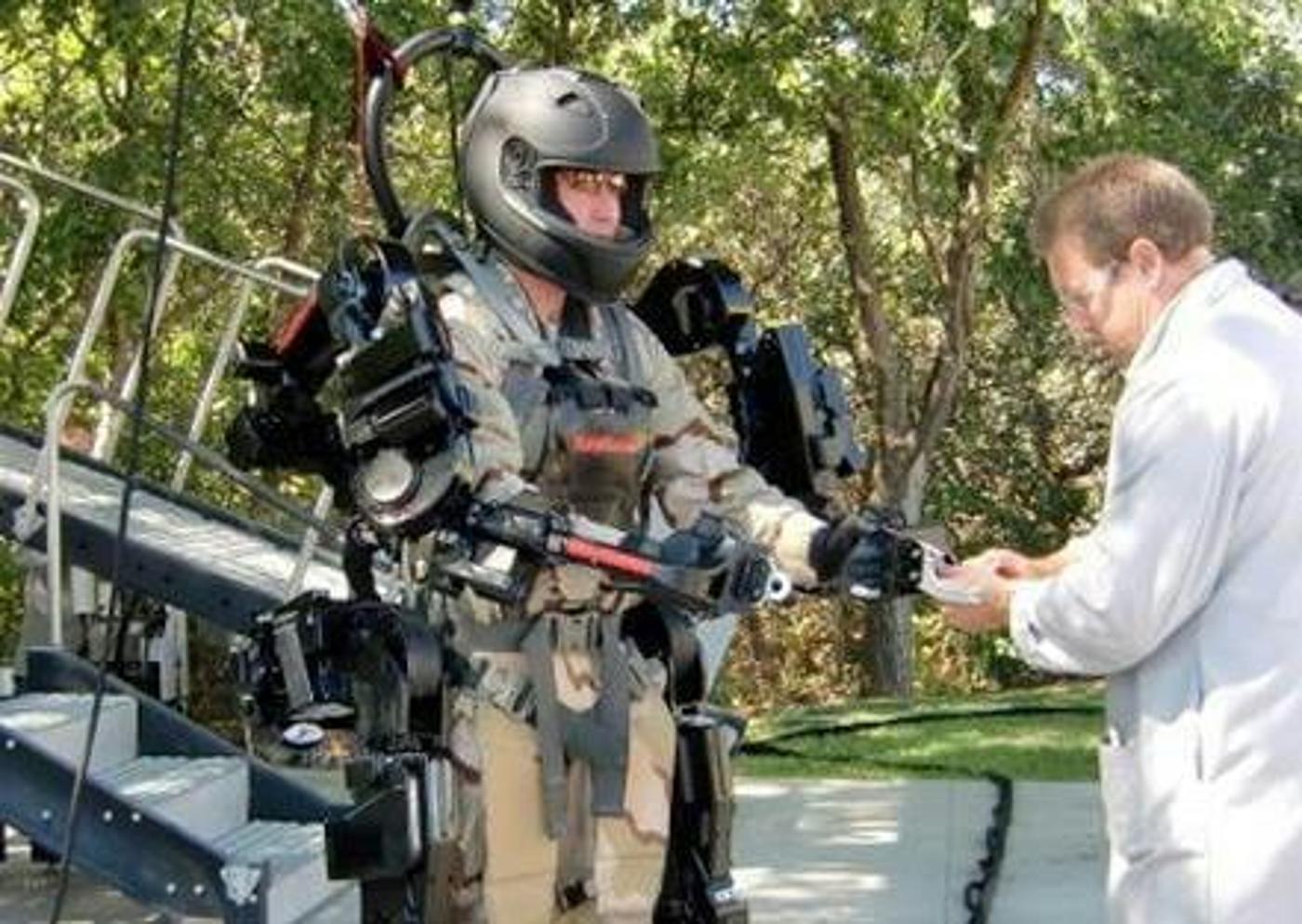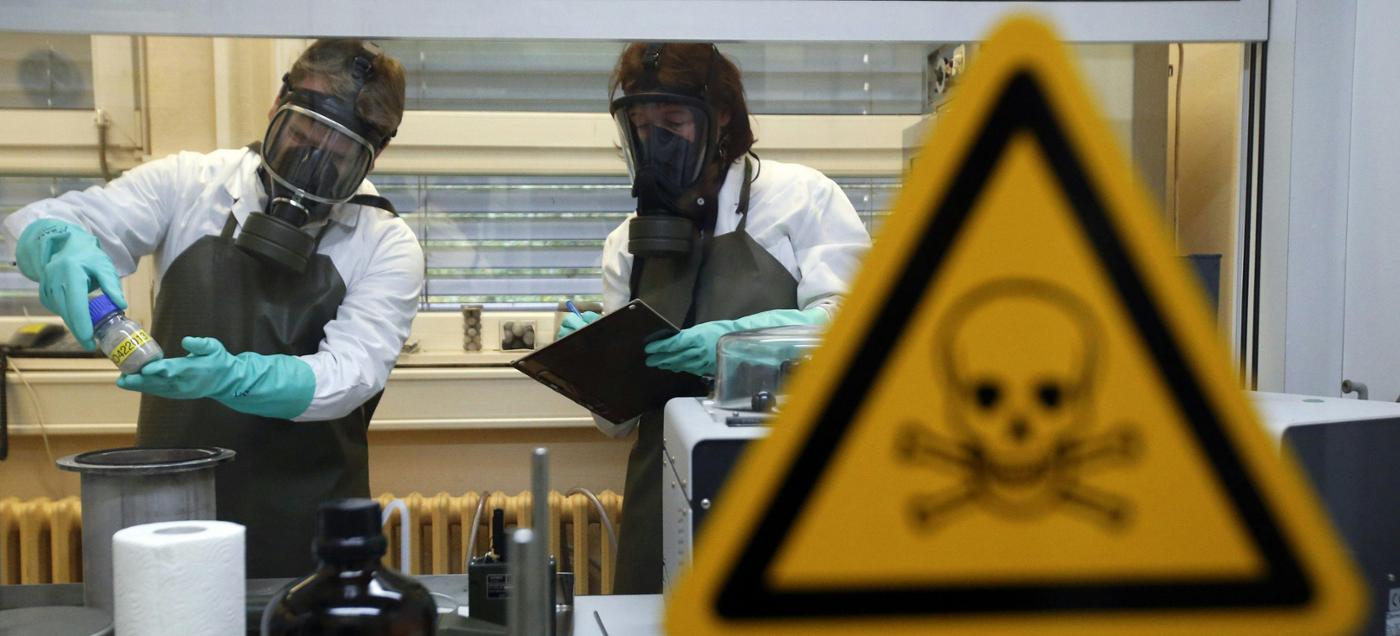At their February 2024 meeting, Allied Defence Ministers formally adopted NATO’s Biotechnology and Human Enhancement Technologies Strategy. Current NATO staff driving the development and delivery of this Strategy outline one of its main features: the first-ever set of Principles of Responsible Use for Biotechnology and Human Enhancement technologies in defence and security.
Biotechnology and human enhancement (BHE) technologies are by no means new, but the unprecedented pace of emerging BHE innovation is disruptive. Fuelled by a convergence with artificial intelligence (AI), new developments in BHE have led to an emerging bio-revolution, one that will transform our society – from healthcare and public health, to industrial process manufacturing, to security and defence.
Breakthroughs in BHE have the potential to address some of the Alliance’s toughest medical, environmental and resilience challenges. Picture a world where bio-manufacturing and synthetic biology offer greener, alternative ways to lessen our supply chain dependencies; where bio-sensing methods provide more accurate, scalable ways to detect novel pathogens and other chemical and biological threats; and where green DNA storage methods replace the energy-draining data storage approaches upon which we currently rely.

As with any emerging and disruptive technology, Biotechnology and Human Enhancement (BHE) technologies also pose new risks to NATO, particularly when used by malicious actors.
Picture courtesy of Gareth / Wavell Room
As with any emerging and disruptive technology, BHE technologies also pose new risks to the Alliance, particularly when used by malicious actors. The same genetic engineering methods that underpin medical breakthroughs can be used to create novel, more lethal or targeted pathogens. The dual proliferation of gene-editing systems and AI-enabled search methods means that cost and skill barriers to access and create chemical and biological threats have been lowered.
In February 2024, Allied Defence Ministers endorsed NATO’s BHE Strategy: the first international agreement governing emerging biotechnology in defence and security. The strategy is guided, first and foremost, by the world’s first Principles of Responsible Use for BHE technologies in defence and security, and reaffirms the Alliance’s unwavering commitment to the Biological Weapons Convention. In implementing this new strategy, the Alliance has opportunities to advance the development and use of BHE technologies for defensive and peaceful purposes while also protecting against the proliferating risks posed by these technologies.
Risks and opportunities of biotechnology and human enhancement technologies
Biotechnology refers to the broad technology area that uses biological processes, cells or cellular compounds to develop new products and technologies. Human enhancement technologies are the biotechnological and non-biotechnological interventions that enable individuals to operate beyond normal human limits or abilities. Human enhancement technologies are thus a related, though distinct, category of technologies.

Human enhancement technologies are the biotechnological and non-biotechnological interventions that enable individuals to operate beyond normal human limits or abilities.
Picture © NATO Allied Command Transformation
Biotechnology has applications as diverse as creating bio-based materials that are stronger, lighter and greener than the materials currently used by our militaries; enhancing our chemical and biological defence through more effective detection, identification and monitoring; and using living microbes to generate electrical currents to reduce power burdens.
Meanwhile, human enhancement technologies hold promise for military medicine and the rehabilitation of operators. These technologies include breakthroughs in regenerative medicine that could one day repair damaged tissues and organs, or new approaches to psychological care that can improve the way post-traumatic stress disorder is treated, including through virtual reality therapy, for example. AI-enabled prosthetics already help improve the quality of life for many who have lost limbs or extremities. Wearable, ingestible and embeddable health technologies can treat ailments that are more prevalent in military and veteran populations.
The Alliance’s innovators, investors and research institutions are driving these developments. As BHE breakthroughs accelerate in the coming years, so too will the opportunities to support our collective resilience, provide care for military operators, and enable the energy transition of our militaries.
At the same time, the Alliance’s strategic competitors and potential adversaries continue to invest in BHE technologies and are actively considering how they can be used in operational environments and in hybrid warfare tactics. BHE technologies, particularity when combined with AI-enabled tools, can be misused to create and proliferate novel pathogens. This biosecurity challenge will require extensive international cooperation.
Without cross-border, international scientific collaboration, the next BHE breakthroughs will elude NATO and its Allies. Similarly, no single country can protect against novel biological proliferation risks alone. Close cooperation between Allies and like-minded, technology-oriented partners will lead to BHE breakthroughs and strengthen our biosecurity. NATO’s responsible approach to BHE technologies is one key step in mitigating BHE’s risks while maximising the opportunities this technology area brings to the Alliance.
NATO’s responsible approach to BHE technologies
As an Alliance of shared values, NATO makes responsible development and use of BHE technologies a cornerstone of the strategy. The strategy re-emphasises existing frameworks – most notably the United Nations Biological Weapons Convention and other related obligations and commitments made by Allies, both national and international – as well as bioethics principles and NATO’s Principles of Responsible Use of AI in defence and security.
Allies and NATO committed to ensuring that the BHE applications they develop and adopt will be – across the various stages of their lifecycles – in accordance with the following six principles of responsible use of BHE:

Human enhancement technologies made available for our personnel will only be used with explicit and informed consent, in line with military health best practices and respect for persons.
Picture © NATO Allied Command Transformation
Lawfulness: BHE will be developed and used in accordance with national and international law, including International Humanitarian Law and Human Rights Law, as applicable.
Responsibility and accountability: BHE will be developed and used with appropriate levels of judgment and care; clear human responsibility will apply in order to ensure accountability.
Safety and security: BHE technologies will only be used if they have passed stringent safety procedures, which may include testing and/or trials, meeting applicable standards and/or have otherwise been demonstrated to the best of scientific knowledge to be safe and effective for human use and the environment.
Human agency: Individuals are not deprived of their sense of judgment and freedom of conscience so that they retain their innate human dignity.
Informed consent: Human enhancement technologies made available for our personnel will only be used with explicit and informed consent, in line with military health best practices and respect for persons.
Sustainability: BHE technologies will be assessed for potential impact on the environment.
NATO’s Principles of Responsible Use for BHE in defence and security were developed in public fora with experts from across NATO and partner countries, including from academia, the private sector and other international organisations. Multidisciplinary experts provided legal, ethical, cultural and science-based perspectives on how responsible BHE in the security and defence context should look. These voices reflect the collaborative approach to decision-making taken by the Alliance, and the approach ensured that the perspectives of Allies and the technologically-oriented partners were represented in the creation of the BHE Principles.
Allies are committed to the pursuit of BHE technologies based on adherence to legal frameworks and a strong commitment to responsible innovation. In particular, Allies reaffirmed in the BHE Strategy that the Alliance’s work on BHE must not contradict or undermine the Biological Weapons Convention or other related obligations and commitments made by Allies, on national and international levels.

Allies are committed to the pursuit of BHE technologies based on adherence to legal frameworks and a strong commitment to responsible innovation. In particular, Allies reaffirmed in the BHE Strategy that the Alliance’s work on BHE must not contradict or undermine the Biological Weapons Convention. Photo courtesy of Brookings Institute
Key considerations in the responsible use of human enhancement technologies include reversibility and invasiveness. Reversible interventions (such as stimulants like caffeine) are time-limited, whereas irreversible ones (such as permanent prosthetic limbs) are not. Further, there are differences between invasive interventions (such as having a pacemaker) versus non-invasive ones (like having bio-sensors integrated into uniforms). Ethical quandaries associated with these characteristics are nuanced. Not all permanent enhancements are undesirable. For instance, those that undergo laser eye surgery typically hope that it lasts. Therefore, while reversibility and invasiveness provide guardrails for ethical discussions around human enhancement technologies, they should still be considered in terms of risk with duty of care guiding all decisions.
These principles are a signal to the international community that the Alliance will actively mitigate BHE’s potential risks while pursuing their development for military health, resilience and green energy transition opportunities. While these principles solidify the commitment of NATO Allies to use responsible BHE, they alone are not enough to ensure that the Alliance’s BHE technologies are developed and used responsibly. These principles need to be operationalised, which means creating tangible frameworks that apply to all phases of the technology lifecycle. That work is underway at NATO.
Making the Principles work
Principles are only as strong as the work that is done to operationalise them. Here, we emphasise two areas of focus: toolkits and education.
Toolkits
Allies recognise the strong areas of technological convergence between BHE and AI. To that end, NATO must maximise synergies between the BHE principles and steps taken to operationalise NATO’s AI Principles of Responsible Use. Responsible AI toolkits shared and developed under NATO’s Data and AI Review Board offer a strong starting point for responsible BHE operationalisation. These AI toolkits are based on responsible-by-design, multidisciplinary engineering practices, and elements of the toolkits include risk and impact assessments. Tools – including risk and impact assessments, as well as standards developed for responsible AI, may still apply to BHE technologies. To make such assessments requires engaging with experts hailing from diverse fields such as molecular biology, biochemistry, genetics and biomedical engineering, medicine, psychology and sociology, applied philosophy, bioethics, robotics and human factors engineering.

AI toolkits are based on responsible-by-design, multidisciplinary engineering practices. Elements of the toolkits include risk and impact assessments, which require engaging with experts hailing from diverse fields such as molecular biology, biochemistry, genetics and biomedical engineering, medicine, psychology and sociology, applied philosophy, bioethics, robotics and human factors engineering. Photo courtesy of Nutra Ingredients Europe
There are several BHE-specific characteristics that need to be assessed when building upon responsible innovation practices that come from other technology areas. For instance, some BHE technologies could entail addiction and dependency risks for operators, which should be considered in any risk and impact assessments. The differing impacts of BHE technologies on individuals and groups, in women and men, and in active-duty versus reserve roles should also be considered, as well as longer-term impacts, including on return to civilian life. These assessments should also take potential environmental impacts into account.
Responsible innovation is just as much about shaping the positive trajectory of technologies as it is preventing and mitigating risks around undesirable technological advancements. As such, operationalising principles means not just mitigating risks, but also improving the health and well-being of military personnel through biotechnology driven medical breakthroughs, both proactively during service and after retirement. This is also true of BHE technologies that do not pertain just to medicine, such as bio-manufacturing pursuits to create less toxic materials than the current chemical alternatives.
Testing, evaluating, validating and verifying are not only important in relation to necessary safety protocols, but also in ensuring that people maintain cognitive liberty in the decisions they take. Making these toolkits as user-friendly as possible is essential to ensuring their uptake – to help build trust with all relevant stakeholders and to have feedback loops inform improvement of the tools themselves.
Education and Bio-literacy
Educating stakeholders on the responsible development and use of BHE technologies in defence and security are also key to operationalising the principles. Educational tools will likely differ depending on the audience, which includes end-users, innovators, and the public.
For end-users who may be asked to consent to the use of a BHE intervention, education and the information that underpins it should be high-quality, accurate, and understandable to non-experts. Effective education also means maintaining transparency and garnering trust in instances where biomedical interventions are deemed necessary for the sake of individuals’ and units’ health and safety.
Innovators should be sensitised to the potential impacts of their research and products, in accordance with the new BHE principles. In line with their “responsible” pillars, both NATO’s new innovation initiatives — the Defence Innovation Accelerator for the North Atlantic (DIANA) and the NATO Innovation Fund (NIF) — will be important vehicles for operationalising NATO’s BHE Principles at the development phase.
Public audiences should also be aware of the Alliance’s responsible approach to BHE and its commitments to international law, including the Biological Weapons Convention. Information, in line with our shared values, should be supplied proactively to increase the public’s knowledge of the peaceful applications of BHE technologies as well as their potential for misuse.
In the coming year, NATO will work to create bio-literacy educational tools available to publics online. This will be a concrete area where NATO will engage external experts from academia, the private sector and civil society to help build trust and insulate against potential disinformation in this area.
Conclusion
Ensuring that the Alliance responsibly develops BHE technologies — including those that might protect us against the future misuse of BHE — is essential. We must act with a sense of urgency to ensure that the Alliance’s BHE technologies are developed in line with our values, principles and laws.
Responsibly fostering and protecting BHE technologies is a cross-societal effort throughout the entire Alliance, and must include the participation of our many stakeholders from across the Alliance and our partner countries. This includes everyone from our decision makers, to NATO’s innovation initiatives – DIANA and the NIF – to our innovators, investors, operators and the publics that NATO serves.
With NATO’s BHE strategy, the Alliance signals its commitment to responsibly maximising BHE’s potential.
